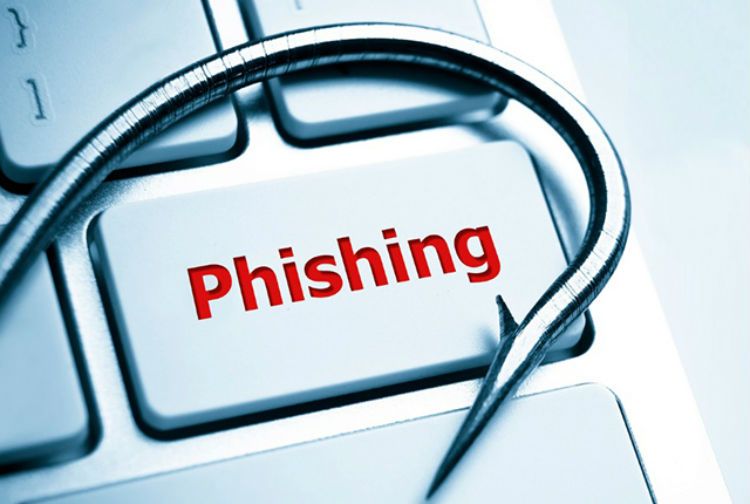7 Key Indicators of Phishing

Email is an essential primary communication tool for individuals and businesses alike, but it brings many risks in its wake. Nine out of 10 cyberattacks start with a phishing email. Cybercriminals are constantly refining their techniques to launch convincing phishing attacks, aiming to deceive recipients into disclosing personal information, financial details or access credentials. The advent of artificial intelligence (AI) technology has only made that proposition easier for them.
Phishing is the top cybersecurity issue
In our Kaseya Security Survey Report 2023, we shared that 78% of our survey respondents said that they expect their organization to fall victim to phishing sometime in 2024. As the gateway to serious and damaging cyberattacks like ransomware and business email compromise (BEC), it’s imperative that businesses take every precaution to educate employees about phishing.
Phishing was the top cybersecurity challenge that businesses in our survey faced in 2023. A whopping 41% of our respondents said that they’d encountered this pernicious problem in 2023. Viruses (39%) were tied with endpoint threats (39%) for second place. More than half of our respondents have also had to contend with a dangerous cyberattack like ransomware or BEC at some point (58%).
Which of the following cybersecurity issues have impacted your business?
| Issue | Response |
| Phishing messages | 41% |
| Computer viruses | 39% |
| Endpoint threats detected | 39% |
| Personal information or credential theft | 34% |
| Business email compromise (BEC) | 31% |
| Ransomware | 27% |
| Supply chain attack | 18% |
| None | 4% |
Source: Kaseya Security Survey Report 2023

What challenges will IT pros face in the second half of 2024? Find out in the Mid-Year Cyber Risk Report. GET IT>>
The 7 key indicators of a phishing attempt
Teaching everyone in an organization to recognize the key indicators of a phishing email can significantly reduce the risk of an employee falling for a malicious message and unleashing a cybersecurity nightmare.
1. Suspicious sender addresses
One of the first things to check in a suspicious email is the sender’s address. Phishers often use email addresses that mimic legitimate ones, with subtle misspellings or misleading domain names. For example, an email purporting to be from a well-known bank might come from an address that slightly alters the bank’s name or uses a different domain (e.g., .net instead of .com).
2. Generic greetings
Phishing emails frequently use generic greetings like “Dear Customer” or “Dear User,” rather than addressing you by name. This is because these emails are sent out in bulk, aiming to trick as many recipients as possible. A legitimate organization with which you have an account will typically use your name directly.
3. Urgent or threatening language
A common tactic used by phishers is to create a sense of urgency or fear. They might claim that your account has been compromised, or that you need to confirm your details immediately to avoid account closure or other negative consequences. This pressure tactic is designed to prompt a quick, unthinking response.
4. Suspicious links and attachments
Phishing emails often contain malicious links or attachments. Hover over any links without clicking them to see the URL; if it looks suspicious or doesn’t match the supposed sender’s website, it’s a red flag. Similarly, unsolicited attachments, especially from unknown senders, should be avoided as they may contain malware like ransomware.
5. Spelling and grammar mistakes
Professional organizations typically ensure their communications are free of spelling and grammar errors. Phishing emails, on the other hand, may contain such mistakes, which can be a sign that the email is not legitimate. Unfortunately, the advent of AI-enhanced phishing helps bad actors get around this red flag.
6. Requests for personal information
Legitimate companies rarely ask for sensitive information, such as passwords, social security numbers or bank account details, via email. If an email requests this type of information, it’s likely a phishing attempt.
7. Too good to be true offers
Emails that promise unexpected prizes, large amounts of money or other too-good-to-be-true offers are often phishing attempts designed to lure you into providing personal information or clicking on malicious links.

In The Educator’s Guide to Cybersecurity, see the cyber threats that schools face & how to mitigate them. DOWNLOAD IT>>
Why AI makes phishing more dangerous
The integration of AI and social engineering in phishing attacks has escalated the sophistication and effectiveness of these cyberthreats, making them increasingly dangerous for individuals and organizations. AI technologies enable attackers to personalize phishing campaigns and automate attacks on a scale previously unattainable. Parallelly, social engineering tactics exploit human psychology to manipulate victims into divulging confidential information or performing actions that compromise security. Here’s how the combination of AI and social engineering elevates the threat level of phishing attacks:
Enhanced personalization and targeting
AI algorithms can analyze vast amounts of data from social media, data breaches and other sources to tailor phishing emails or messages to individual targets. This can include using a person’s name, job title or recent activities to create a context that feels genuine. Such personalized attacks are more likely to deceive the recipient, as they appear to be relevant and from a trustworthy source.
Sophisticated language and content creation
AI can generate convincing phishing content, including well-crafted emails, messages and even voice or video communications, using natural language processing (NLP) technologies. This capability allows phishers to create more believable and less detectable phishing attempts, increasing the chances that a target will fall for the scam.
Automated social engineering attacks
AI enables the automation of social engineering tactics at a large scale. For example, chatbots powered by AI can initiate contact with targets on social media or via email, engaging in seemingly natural conversations to lure victims into phishing traps. These automated systems can respond to victims’ inquiries in real-time, guiding them toward the desired malicious action with personalized persuasion techniques.
Evolving phishing strategies
AI systems can learn from the success or failure of phishing campaigns, adapting their approaches to be more effective in future attempts. This means that AI-driven phishing attacks can become increasingly sophisticated over time, identifying which strategies yield the highest success rates and refining their methods accordingly.
Bypassing security measures
AI can help phishers identify and exploit vulnerabilities in security systems, including those designed to detect phishing emails. By analyzing patterns in security defenses, AI can assist attackers in crafting phishing attempts that are more likely to bypass filters and reach their intended targets.
Deepfakes and impersonation
The use of AI to create deepfake audio and video content can facilitate highly convincing impersonation attacks. For instance, an attacker could generate a video message from a CEO asking employees to disclose sensitive company information or transfer funds. These deepfake technologies leverage AI to manipulate or generate visual and audio content that is nearly indistinguishable from genuine content, making it a powerful tool for social engineering.

Every business faces insider risk, from employee mistakes to malicious acts. Learn how to mitigate it. DOWNLOAD EBOOK>>
Kaseya’s Security Suite Helps Businesses Mitigate All Types of Cyber Risk Affordably
Kaseya’s Security Suite has the powerful tools that IT professionals need to mitigate all types of cyber-risks, including email-based threats, effectively and affordably without breaking a sweat.
BullPhish ID — This effective, automated security awareness training and phishing simulation solution provides critical training that improves compliance, prevents employee mistakes and reduces a company’s risk of being hit by a cyberattack.
Dark Web ID — Our award-winning dark web monitoring solution is the channel leader for a good reason: It provides the greatest amount of protection around with 24/7/365 human and machine-powered monitoring of business and personal credentials, including domains, IP addresses and email addresses.
Graphus — Automated email security is a cutting-edge solution that puts three layers of AI-powered protection between employees and phishing messages. It works equally well as a standalone email security solution or supercharges your Microsoft 365 and Google Workspace email security.
RocketCyber Managed SOC — Our managed cybersecurity detection and response (MDR) solution is backed by a world-class security operations center that detects malicious and suspicious activity across three critical attack vectors: endpoint, network and cloud.
Datto EDR — Detect and respond to advanced threats with built-in continuous endpoint monitoring and behavioral analysis to deliver comprehensive endpoint defense (something that many cyber insurance companies require).
Datto AV – Safeguard businesses effortlessly against sophisticated cyberthreats, including Zero Days and ransomware, with AI-driven, next-generation antivirus protection that is over 99% effective, far surpassing the industry average.
Vonahi Penetration Testing – How sturdy are your cyber defenses? Do you have dangerous vulnerabilities? Find out with vPenTest, a SaaS platform that makes getting the best network penetration test easy and affordable for internal IT teams.
See how our Security Suite can be put to work for you with a personalized demo.
- Book a demo of BullPhish ID, Dark Web ID, RocketCyber Managed SOC and Graphus. BOOK IT>>
- Book a demo of vPenTest BOOK IT>>
Book a demo of Datto AV and Datto EDR BOOK IT>>